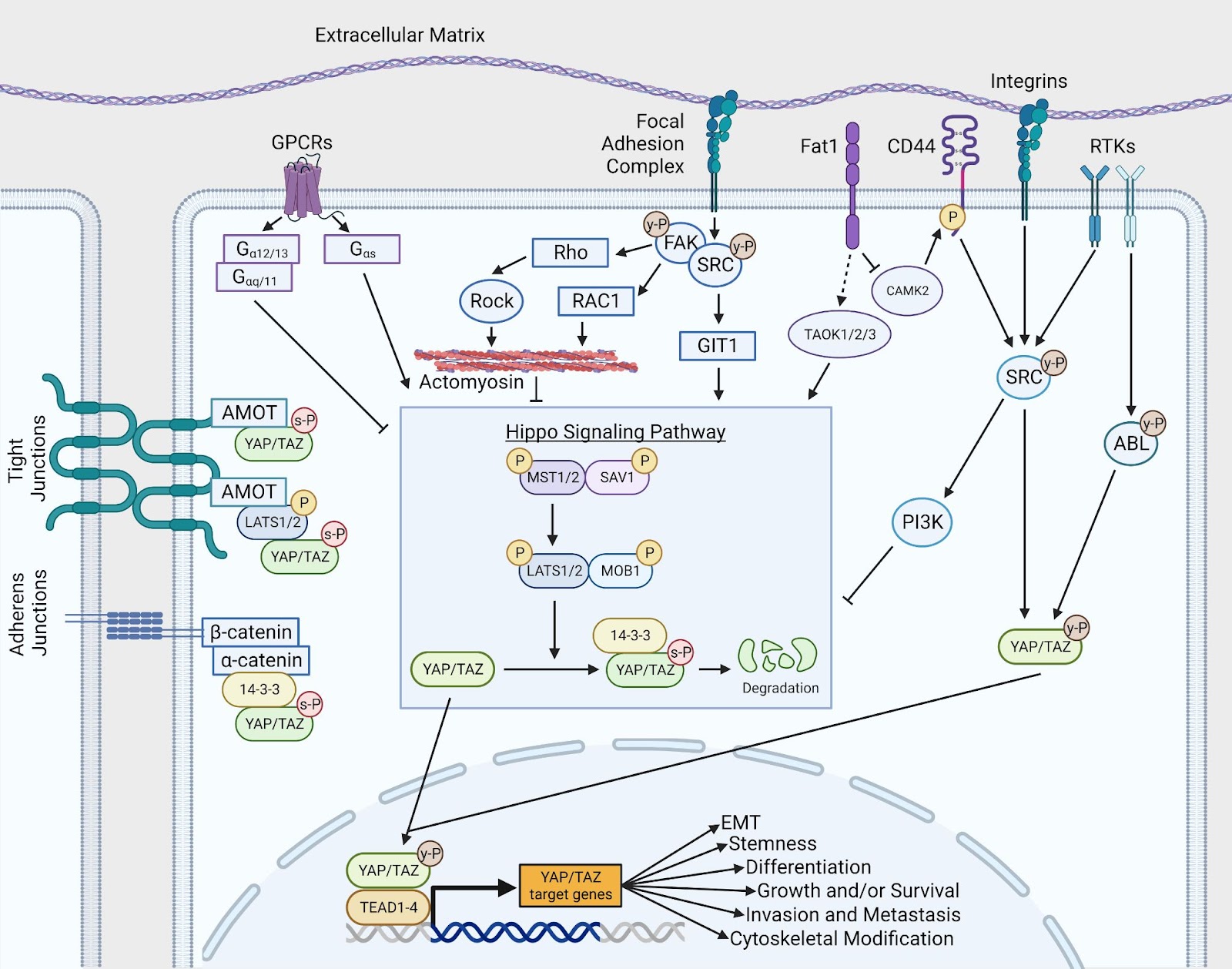by Hannah Thrash
Your body’s growth is fueled by the growth of your cells. If your cells didn’t continue to divide, and double, and triple, and get bigger, we would all exist as single-celled organisms! Thankfully, though, cells have the inherent ability to grow at just the right time, driving the growth of tissues and organs and, ultimately, the entire human body. But what promotes this process? How does it get turned on? How does it stop? All of these questions can be answered by a quick look at the HIPPO pathway.
The HIPPO pathway was discovered 30 years ago in 1995 by scientists trying to understand compensatory proliferation (Fu et al. 2022). When a bunch of cells die, more cells grow up to fill the empty space – this is compensatory proliferation, cells proliferating to compensate for the loss of other cells. What scientists found was that when they removed a certain protein in flies, the flies experienced a growth surge, no they didn’t get bigger, but they began to overgrow – picture a fly with fat rolls (Snigdha et al. 2019). They realized that this protein had to be a key for controlling cell division, because when it was gone, the cells just divided and divided without much organization or control. More studies on this protein revealed that actually a whole slew of proteins are involved in controlling the division of cells in order to control organ, and ultimately organism, growth. They named this group of proteins the HIPPO pathway (because apparently a fly with fat rolls looks like a hippopotamus).
This work was originally done in flies because flies have a much simpler makeup than humans, and have a much faster lifecycle, so the effects of things like losing a single protein can be monitored much more easily. However, this same HIPPO pathway was uncovered in humans as well! (Fu et al. 2022). In humans, the HIPPO pathway works the same way to control organ and organism growth by monitoring cell division. The main players in the HIPPO pathway are two proteins called YAP and TAZ. When YAP and/or TAZ are activated, they move to the nucleus of the cell and bind a third protein called TEAD. This tells the cell that it is time to grow and divide! When YAP and TAZ are deactivated, they are degraded by the cell and no division happens. The process of activating YAP and TAZ occurs stepwise, two other proteins must be turned on, or activated, first. (These proteins are called MST and LATS) (Thrash and Pendergast 2023). What starts the activation process you may ask? Signals from other cells! Cells talk to each other, and it’s these messages that start one or more of a variety of signaling pathways that ultimately lead to YAP and TAZ activation.

Figure 1: The HIPPO Pathway, and other pathways that contribute to it.
There is a lot going on here! Basically all this sums to say, there are many things that control the activation of the HIPPO pathway, and most of these signaling pathways begin outside the cell itself and move inward by various means to control the stability and activity of the HIPPO proteins, YAP and TAZ. When YAP and TAZ are in the nucleus they tell the cell to grow and divide, but there are also things that occur that can help promote some diseases, like cancer. (Figured created by author using Biorender, see also Thrash and Pendergast 2023).
This is a process that is necessary for human (and animal and insect) survival. However, like a lot of other growth pathways, there is also a dark side. When a cell becomes cancerous, often the HIPPO pathway gets left on and the cell continues to grow and divide out of control, contributing to the cancer growth (Fu et al. 2022). This is just one example of cancer taking over a normal and natural cellular process in order to help itself. However, there is good news! Scientists have figured out that in HIPPO-driven cancers, using drugs to forcefully turn off the HIPPO pathway works well in stopping tumor growth (Thrash and Pendergast 2023). Many drugs are currently being developed for safe use in patients.
The HIPPO pathway is one of many signaling pathways in the cell that all work together to keep cells alive and happy. But it is one of the key pathways for controlling organ growth. So the next time you see a hippopotamus, think about the HIPPO pathway and how it’s diligently working in your cells to keep everything orderly and in the proper size!
